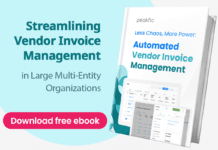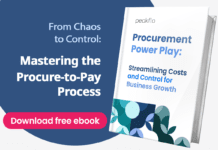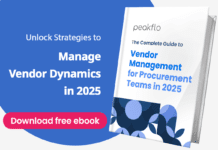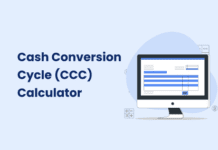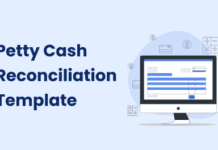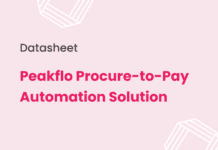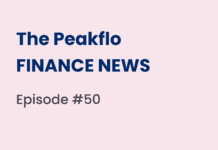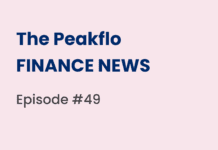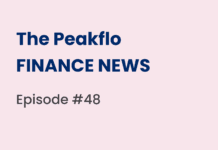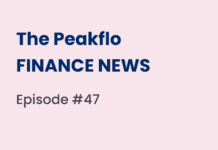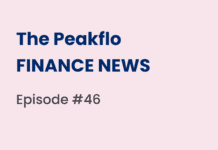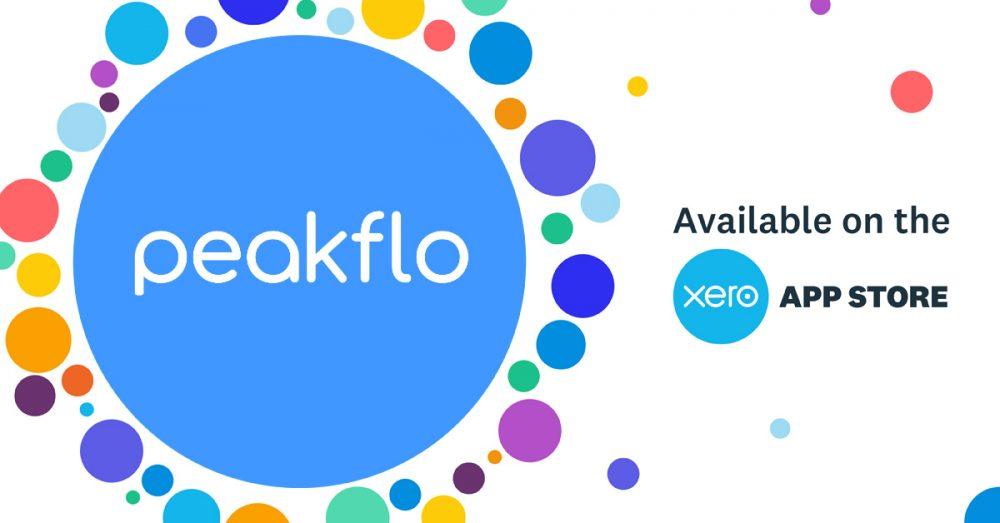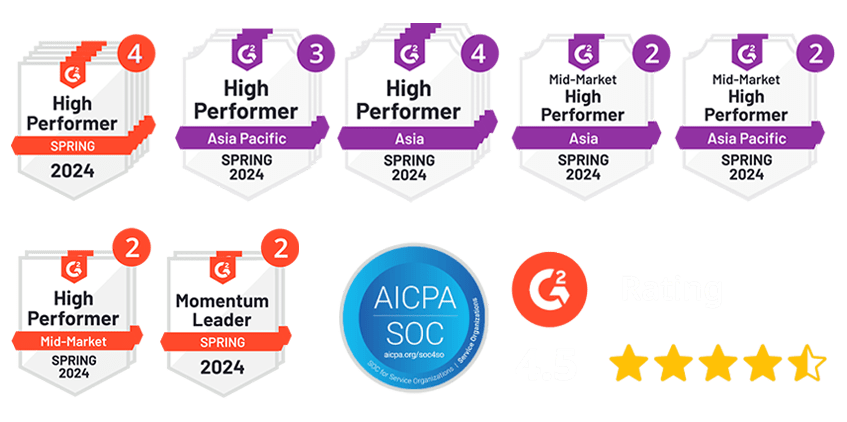Procurement is an important part of running a successful business. It helps you get the goods and services you need to operate smoothly and reach your business goals. Imagine your procurement manager carefully managing costs, choosing reliable suppliers, and meeting the company’s needs. For procurement managers, it is more than buying supplies—it’s a strategy to help the business grow and avoid risks.
Research shows that companies with strong procurement practices can cut costs by up to 20% and maintain operations by building better vendor relationships. This guide explains procurement, its different types, key steps, and how technology is changing it.
What is Procurement?
Procurement is a business function that helps in deciding what to buy, finding the right suppliers, negotiating prices, and ensuring timely deliveries. It focuses on strategy, building good relationships, and helping a business reach its goals. For example, companies like Apple rely on smart procurement to keep their factories running smoothly and create new products.
Core Pillars of Procurement
For procurement to be effective, you must focus on these key areas:
1. Strategic Sourcing
This means finding suppliers that match your company’s goals. For example, a company that sells eco-friendly clothes will look for suppliers offering sustainable fabrics.
2. Cost Management
Procurement is about finding the best balance between price, quality, and long-term value instead of just picking the cheapest option.
3. Supplier Relationship Management
Building strong partnerships with suppliers can lead to better prices, faster service, and extra help when problems come up.
4. Regulatory Compliance
Companies must follow laws and ethical guidelines. This avoids fines and helps you stay honest and trustworthy.
5. Technology Utilization
Tools like apps and software make procurement faster and easier. For instance, some platforms help businesses track spending and spot problems quickly.
These areas help procurement support the company’s goals while staying efficient.
How Procurement, Purchasing, and Sourcing are Different?
These three terms sound similar, but they mean different things:
- Procurement is the whole process, from planning to delivery.
- Purchasing is the step where the actual buying happens.
- Sourcing is about finding and choosing the right suppliers.
For example, sourcing might involve choosing a supplier who offers environmentally friendly materials. Purchasing would involve placing the order and arranging payment. Procurement ensures that the entire process supports the company’s goals, such as saving money or being sustainable.
Knowing the difference between these terms helps companies avoid mistakes and work more smoothly.
Why is Procurement Important?
Effective procurement ensures your company gets the goods and services it needs at the right time and cost. It can save money, reduce risks, and improve your business’s operations. When done well, procurement becomes a tool for achieving business goals and driving growth.
Here’s why procurement matters:
1. Cost Savings
Smart procurement helps you control your spending. For example, buying in bulk or negotiating better deals with suppliers can reduce costs. Ordering larger quantities often lowers the price per unit and reduces shipping expenses. These strategies save money without compromising quality.
2. Risk Reduction
Relying on one supplier can put your business at risk. If that supplier can’t deliver, it could disrupt your operations. Working with multiple suppliers spreads the risk. For example, during the COVID-19 pandemic, companies with diverse suppliers faced fewer disruptions. They could adapt faster and keep running smoothly.
3. Improved Efficiency
Procurement ensures materials and services are available when needed. This avoids delays and keeps projects on track. Automating repetitive tasks like invoicing or purchase order approvals also saves time. For example, digital tools can track orders, reduce errors, and let teams focus on more important work.
4. Competitive Advantage
Companies with strong procurement processes often outperform their competitors. They can deliver products faster and at lower costs. For example, Toyota’s lean procurement practices helped it maintain a steady supply chain during global challenges. This gave Toyota an advantage over companies that struggled with supply disruptions.
Procurement isn’t just about buying. It’s about saving money, avoiding risks, and ensuring smooth operations. With a good procurement strategy, your business can grow stronger and adapt to changes in the market.
Next, let’s explore the types of procurement processes and how they fit different business needs.
Types of Procurement
Different businesses use different types of procurement. The right method depends on the company’s needs and goals. Understanding these types can help avoid delays and use resources wisely.
1. Direct Procurement
Direct procurement involves buying goods and materials needed to make products. These items are essential for production.
Example: A car company buys steel and engine parts to build vehicles. Without these materials, production stops, and customers are disappointed.
2. Indirect Procurement
Indirect procurement covers items that help the business run but are not part of the product. Examples include office supplies, software, and cleaning services.
Example: A marketing agency pays for project management tools or hires cleaning staff to maintain its workspace.
3. Goods vs. Services Procurement
- Goods Procurement involves buying physical items like raw materials or equipment, which need to be stored and managed.
Example: A grocery store stocks food items to sell to customers.
- Services Procurement focuses on hiring people or companies to provide services, like IT support or consulting. Clear contracts and performance tracking are important here.
Example: A business hires a consultant to improve its operations.
Matching your procurement method to your business needs can save you money, improve your relationships with suppliers, and keep your business running smoothly.
Key Procurement Processes
Procurement is a step-by-step process that ensures businesses get what they need efficiently and cost-effectively. Following these steps helps save money, avoid delays, and maintain strong supplier relationships.
1. Requirement Planning
The first step is figuring out what is needed, how much is required, and when it is needed. This step helps avoid shortages and waste.
Example: A construction company calculates how much steel it needs for a project to avoid running out halfway through.
2. Vendor Sourcing
This step involves finding and comparing suppliers based on cost, quality, and reliability. It ensures the business works with vendors who meet its needs.
Example: A retail store compares delivery services to find one that is affordable and delivers on time.
3. Purchase Order and Contract Execution
Once a supplier is selected, formal agreements are made. These contracts specify costs, delivery timelines, and quality standards.
Example: A tech company signs a contract with a software provider to ensure clear terms for service and pricing.
4. Order Fulfillment and Delivery Monitoring
After placing the order, businesses track the delivery to ensure it arrives on time and in good condition.
Example: A restaurant checks its weekly fruit delivery to ensure the produce is fresh and usable.
5. Performance Evaluation
Businesses regularly review how well their suppliers are performing. This step helps ensure quality and identifies areas where improvements can be made.
Example: A company evaluates its hardware supplier each year to see if they meet deadlines and maintain quality standards.
These steps help you avoid overspending, delays, and poor-quality products. Next, we’ll explore how technology is transforming procurement and making it even more effective.
Enhancing Procurement Efficiency
Improving procurement helps build a strong supply chain. Smart strategies and modern tools make the process smoother and more effective. Here are five simple ways to enhance procurement efficiency:
1. Use Technology to Simplify Work
Technology can speed up procurement and improve its accuracy. Automated tools handle repetitive tasks, analyze spending, and improve tracking.
Example: AI tools can predict what products will be needed, helping businesses avoid running out of stock or ordering too much. Platforms like Peakflo provide real-time information on spending and supplier performance.
2. Build Strong Relationships with Suppliers
Good relationships with suppliers are crucial. Working closely with them can lead to better deals, faster deliveries, and higher-quality products.
Example: Starbucks collaborates with coffee farmers to ensure they receive high-quality beans while supporting sustainable farming practices.
3. Train Your Team for Success
A well-trained team can negotiate better deals, adapt to changes, and make smart choices. Regular training keeps the team updated on the latest strategies.
Example: A company that teaches its staff data analysis can better spot trends and find ways to save money.
4. Track Key Metrics Regularly
Monitoring performance data helps identify problems and opportunities. It’s important to track metrics such as cost savings, supplier reliability, and delivery times.
Example: A retailer checks how often suppliers deliver on time. This helps them identify and fix delays before they become bigger issues.
5. Choose Sustainable Practices
Using eco-friendly materials and working with sustainable suppliers benefits both the planet and the business. It also boosts your brand’s reputation.
Example: IKEA focuses on sourcing sustainable materials. This attracts eco-conscious customers and builds long-term trust.
With the right tools and strategies, you can avoid delays, reduce risks, and stay competitive. Next, let’s examine how technology is transforming procurement processes.
The Role of Technology in Procurement
Thanks to technology, the procurement process, which used to be slow and manual, is now fast and data-driven. Tools like automation, AI, and cloud platforms help you save time, reduce costs, and make better decisions. Here are some ways technology is transforming procurement today.
1. Automation
Automation handles repetitive tasks, such as creating purchase orders, tracking invoices, and managing payments. This reduces mistakes and speeds up the process, allowing teams to focus on important work.
Example: A supermarket uses automation to reorder items when shelves get low. This ensures products are always in stock for customers.
2. AI and Machine Learning
Artificial intelligence (AI) analyzes data to identify patterns, find ways to save money, and assess suppliers’ performance. Over time, machine learning tools have become smarter, offering better predictions and insights each time they are used.
Example: A clothing manufacturer uses AI to predict changes in fabric prices. This helps them buy materials at the best prices.
3. Cloud-Based Solutions
Cloud-based procurement systems allow teams and suppliers to work together from anywhere. They provide real-time updates on orders, payments, and communication, keeping everyone informed.
Example: A global retailer uses a cloud platform to track and manage its supply chain in different countries.
By using these tools, you can enhance decision-making, reduce costs, and improve overall procurement outcomes.
How Peakflo Transforms Procurement Efficiency
Procurement is an important part of running a business. It involves buying the right goods and services, working with vendors, and managing costs. However, manual processes often make it slow and complicated. Peakflo helps by automating procurement processes and giving businesses the tools to work smarter. Here’s how it works:
1. Streamlined Workflows and Budget Management
Peakflo automates tasks like approving purchases, processing invoices, and managing budgets. Instead of doing everything manually, you can rely on smooth, automated workflows. The system also tracks spending and sends alerts when you’re close to your budget limits. This makes operations faster, reduces mistakes, and helps keep finances under control.
2. Vendor Portal and Onboarding
With Peakflo’s vendor portal, you can track vendor interactions by providing a self-service platform for onboarding. Vendors can submit their information, upload compliance documents, and track their invoices and payment statuses in real-time. This reduces administrative effort and ensures accurate vendor data from the start.
3. Accurate Invoice Matching
Peakflo eliminates the guesswork in invoice matching by automating two-way and three-way PO matching. This ensures all invoices align with purchase orders and goods receipt notes. Any mismatch is flagged instantly for review, significantly reducing the risk of overpayments, fraud, or errors, while enhancing accuracy in financial reporting.
4. Faster Vendor Reconciliation
Reconciliation tasks that traditionally take hours can now be completed in minutes with Peakflo’s AI-powered reconciliation tools. It automatically compares vendor statements with internal records, identifies discrepancies, and ensures that all payouts are accurate and timely. This not only saves time but also fosters stronger vendor relationships through reliable payments.
5. Procure-to-Pay Automation
Organize your entire procurement cycle with Peakflo’s procure-to-pay solution. It simplifies supplier management, automates purchase order creation, and integrates invoice approvals, all within a single platform. This end-to-end solution eliminates bottlenecks, speeds up procurement workflows, and ensures transparency in financial operations.
Peakflo simplifies procurement by automating repetitive tasks and providing real-time insights. This allows businesses to focus on bigger goals while saving time, reducing costs, and improving relationships with vendors.
Conclusion
Procurement is a key part of any successful business. It helps you save money, run your business smoothly, and stay ahead of competitors. Procurement processes allow you to decide what to buy and build strong partnerships with suppliers. Using modern technology, you can overcome challenges and grow stronger.
Understanding procurement allows professionals to make smart choices that benefit the entire company. Tools like Peakflo can make procurement easier and more effective. Ready to elevate your procurement strategy? Request a demo to discover how Peakflo’s innovative solutions can help you achieve your goals.









![Why AI Sales Calls Are Making Good Sales Reps Even Better [2025 Guide] ai sales calls](https://cdn-kmjmp.nitrocdn.com/YvtqmrsiHUxqerlSiZgbfzqqTARWTElr/assets/images/optimized/rev-834053b/blog.peakflo.co/wp-content/uploads/2025/09/65168cf6-3001-4733-8cbc-12d5684cf449-218x150.webp)







